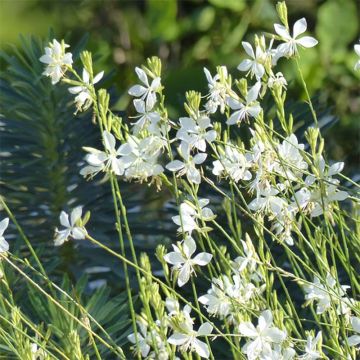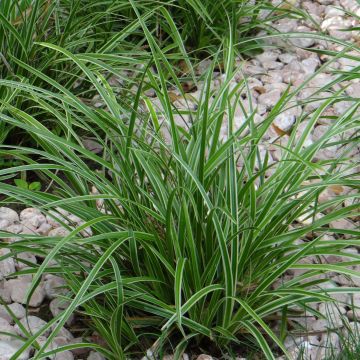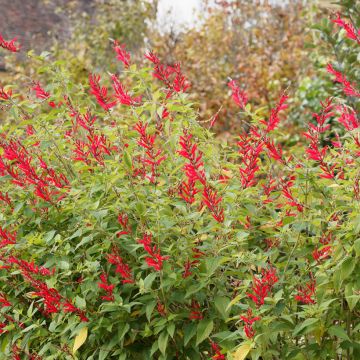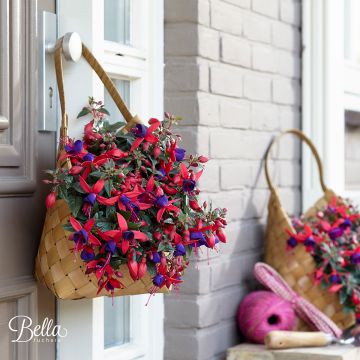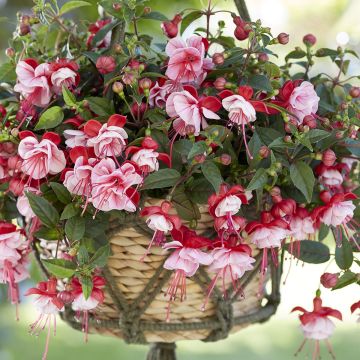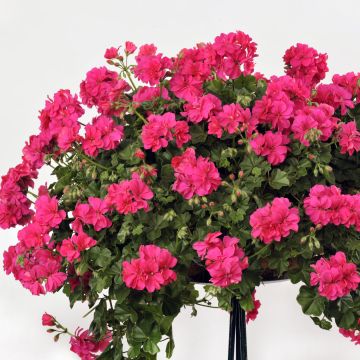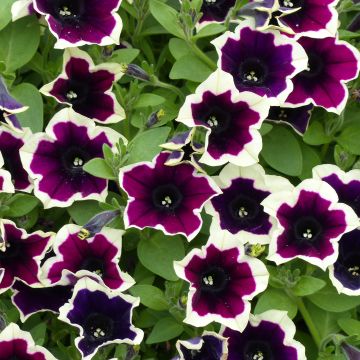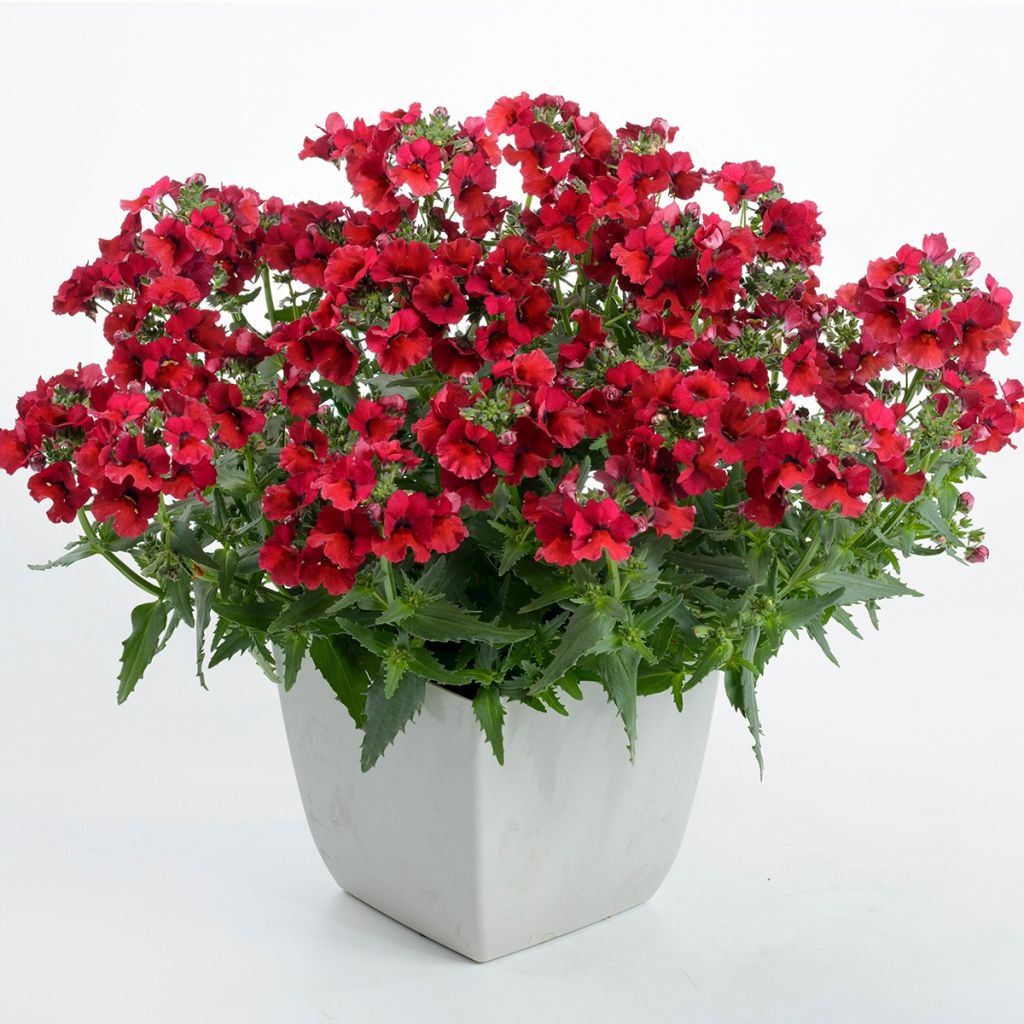

Nemesia Nesia Burgundy
Nemesia hybrida Nesia Burgundy
Nemesia hybrida Nesia Burgundy
Cape Jewels, Baby Snapdragon
Special offer!
Receive a €20 voucher for any order over €90 (excluding delivery costs, credit notes, and plastic-free options)!
1- Add your favorite plants to your cart.
2- Once you have reached €90, confirm your order (you can even choose the delivery date!).
3- As soon as your order is shipped, you will receive an email containing your voucher code, valid for 3 months (90 days).
Your voucher is unique and can only be used once, for any order with a minimum value of €20, excluding delivery costs.
Can be combined with other current offers, non-divisible and non-refundable.
Home or relay delivery (depending on size and destination)
Schedule delivery date,
and select date in basket
This plant carries a 6 months recovery warranty
More information
We guarantee the quality of our plants for a full growing cycle, and will replace at our expense any plant that fails to recover under normal climatic and planting conditions.
Would this plant suit my garden?
Set up your Plantfit profile →
Description
This Nemesia Burgundy, from the Nesia series, is a variety selected for its bushy and compact habit as well as its large flowers in vibrant colours. This adorable annual plant bears clusters of fragrant flowers in a deep red, a rare colour among Nemesias. They bloom abundantly, covering its foliage for months, creating a radiant effect in flowerpots and ephemeral flowerbeds. Best placed in a sunny location, in fertile and well-drained soil.
Nemesia strumosa, also known as African Nemesia, is an annual plant from the family Scrophulariaceae, native to South Africa. Through hybridisation with other Nemesias, it has given rise to numerous horticultural varieties, whose performance in terms of floriferousness and durability continues to improve. The "Nesia" series brings together several improved varieties, offering a harmonious cushion-like habit, good durability, and fragrant and well-coloured flowering from May to October.
The 'Burgundy' variety displays large flowers in a red colour with an almost black centre, fragrant and gathered at the end of sturdy stems. In just a few weeks, the plant forms a cushion of approximately 25-30 cm (10-12in) in all directions, with an upright rather than trailing habit. The foliage consists of small, deeply toothed lanceolate leaves, of a medium green colour. This well-branched plant is resistant to wind and rain.
From the first days of spring, the vibrant colours of Nemesia brighten up the flowerbeds in cities and villages. On terraces and in gardens these fresh plants, with their graceful habit and endless flowering, perfectly adorn hanging baskets, all types of planters, and even perennial borders, preferably in full sun. They are easy to cultivate in the garden and provide spectacular results when planted in containers. Use them also to fill borders, in a mix of colours or in combination with geraniums, lobelias, verbenas, petunias, etc.
Note: Please be aware that our young plug plants are professional products intended for experienced gardeners: upon receipt, repot and store them in a sheltered place (veranda, greenhouse, cold frame) at a temperature above 14°C (57.2°F) for a few weeks before being planted outdoors, once the risk of frost has passed.
Report an error about the product description
Flowering
Foliage
Plant habit
Botanical data
Nemesia
hybrida
Nesia Burgundy
Scophulariaceae
Cape Jewels, Baby Snapdragon
Cultivar or hybrid
Planting and care
Plant your Nesia Burgundy nemesias in a sunny location or possibly in partial shade. They need a light, fertile, and humus-rich soil and appreciate a fertiliser input. They do not tolerate high temperatures combined with significant humidity very well. You can plant your nemesias in a flowerbed or in pots. In pots, these plants need to be regularly watered. Planting should be done after the last frost, in spring. In summer, during periods of high heat, do not hesitate to prune the plant severely (10-15 cm (4-6in) from the base) between two flowerings to encourage the formation of new flowering shoots.
Planting period
Intended location
Care
This item has not been reviewed yet - be the first to leave a review about it.
Similar products
Haven't found what you were looking for?
Hardiness is the lowest winter temperature a plant can endure without suffering serious damage or even dying. However, hardiness is affected by location (a sheltered area, such as a patio), protection (winter cover) and soil type (hardiness is improved by well-drained soil).

Photo Sharing Terms & Conditions
In order to encourage gardeners to interact and share their experiences, Promesse de fleurs offers various media enabling content to be uploaded onto its Site - in particular via the ‘Photo sharing’ module.
The User agrees to refrain from:
- Posting any content that is illegal, prejudicial, insulting, racist, inciteful to hatred, revisionist, contrary to public decency, that infringes on privacy or on the privacy rights of third parties, in particular the publicity rights of persons and goods, intellectual property rights, or the right to privacy.
- Submitting content on behalf of a third party;
- Impersonate the identity of a third party and/or publish any personal information about a third party;
In general, the User undertakes to refrain from any unethical behaviour.
All Content (in particular text, comments, files, images, photos, videos, creative works, etc.), which may be subject to property or intellectual property rights, image or other private rights, shall remain the property of the User, subject to the limited rights granted by the terms of the licence granted by Promesse de fleurs as stated below. Users are at liberty to publish or not to publish such Content on the Site, notably via the ‘Photo Sharing’ facility, and accept that this Content shall be made public and freely accessible, notably on the Internet.
Users further acknowledge, undertake to have ,and guarantee that they hold all necessary rights and permissions to publish such material on the Site, in particular with regard to the legislation in force pertaining to any privacy, property, intellectual property, image, or contractual rights, or rights of any other nature. By publishing such Content on the Site, Users acknowledge accepting full liability as publishers of the Content within the meaning of the law, and grant Promesse de fleurs, free of charge, an inclusive, worldwide licence for the said Content for the entire duration of its publication, including all reproduction, representation, up/downloading, displaying, performing, transmission, and storage rights.
Users also grant permission for their name to be linked to the Content and accept that this link may not always be made available.
By engaging in posting material, Users consent to their Content becoming automatically accessible on the Internet, in particular on other sites and/or blogs and/or web pages of the Promesse de fleurs site, including in particular social pages and the Promesse de fleurs catalogue.
Users may secure the removal of entrusted content free of charge by issuing a simple request via our contact form.
The flowering period indicated on our website applies to countries and regions located in USDA zone 8 (France, the United Kingdom, Ireland, the Netherlands, etc.)
It will vary according to where you live:
- In zones 9 to 10 (Italy, Spain, Greece, etc.), flowering will occur about 2 to 4 weeks earlier.
- In zones 6 to 7 (Germany, Poland, Slovenia, and lower mountainous regions), flowering will be delayed by 2 to 3 weeks.
- In zone 5 (Central Europe, Scandinavia), blooming will be delayed by 3 to 5 weeks.
In temperate climates, pruning of spring-flowering shrubs (forsythia, spireas, etc.) should be done just after flowering.
Pruning of summer-flowering shrubs (Indian Lilac, Perovskia, etc.) can be done in winter or spring.
In cold regions as well as with frost-sensitive plants, avoid pruning too early when severe frosts may still occur.
The planting period indicated on our website applies to countries and regions located in USDA zone 8 (France, United Kingdom, Ireland, Netherlands).
It will vary according to where you live:
- In Mediterranean zones (Marseille, Madrid, Milan, etc.), autumn and winter are the best planting periods.
- In continental zones (Strasbourg, Munich, Vienna, etc.), delay planting by 2 to 3 weeks in spring and bring it forward by 2 to 4 weeks in autumn.
- In mountainous regions (the Alps, Pyrenees, Carpathians, etc.), it is best to plant in late spring (May-June) or late summer (August-September).
The harvesting period indicated on our website applies to countries and regions in USDA zone 8 (France, England, Ireland, the Netherlands).
In colder areas (Scandinavia, Poland, Austria...) fruit and vegetable harvests are likely to be delayed by 3-4 weeks.
In warmer areas (Italy, Spain, Greece, etc.), harvesting will probably take place earlier, depending on weather conditions.
The sowing periods indicated on our website apply to countries and regions within USDA Zone 8 (France, UK, Ireland, Netherlands).
In colder areas (Scandinavia, Poland, Austria...), delay any outdoor sowing by 3-4 weeks, or sow under glass.
In warmer climes (Italy, Spain, Greece, etc.), bring outdoor sowing forward by a few weeks.

































